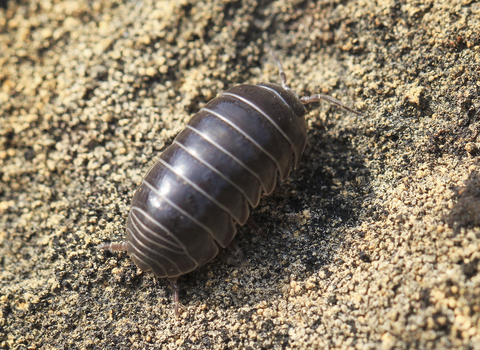
Pill woodlouse ©Frank Porch
Pill woodlouse
The defensive mechanism of the pill woodlouse is very recognisable - it curls itself into a tight ball, only showing its plated armour to its attacker. It is an important recycler of nutrients, feeding on decaying matter.
Scientific name
Armadillidium vulgareWhen to see
January to DecemberTop facts
About
The pill woodlouse is rounded and slate grey, and when it is disturbed, it rolls up into a ball (resembling a small pill) to protect itself. It feeds on dead and decaying matter and is an important nutrient-recycler. It lives in a variety of habitats, but prefers chalk and limestone soils and turf. It emerges at night to feed and can be seen climbing trees and walls in search of mildew and rotting plants to feed on. Woodlice are actually crustaceans, not insects, so are more closely related to crabs and shrimps. They can be very numerous in compost heaps or under rocks in the garden.What to look for
The pill woodlouse is grey and roundish, with a number of segments or 'plates' in its exoskeleton.It looks similar to the pill millipede (Glomeris marginata), which also curls up into a ball. The best way to tell the two apart is by counting their legs: woodlice have seven pairs of walking legs, whereas pill millipedes have around 18 pairs. Another difference is that the 'plates' at the rear end of the pill woodlouse are much narrower than those on the rest of the body.
